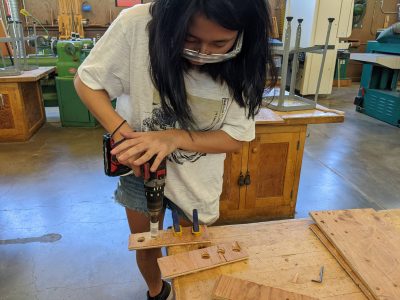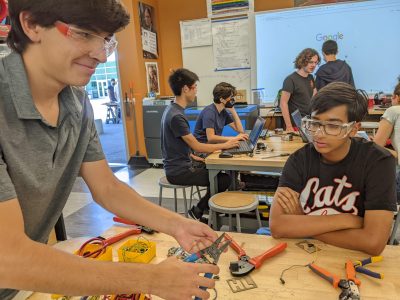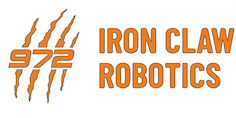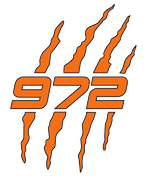Last weekend, the robotics team participated in a basic training day. The day was designed to introduce newcomers to every part of the robotics team to help them decide what part of robotics they are most interested in. Previously, this introductory training was stretched across multiple days, with a metal shop on one day, programming on the next, etc. However, the team combined all basic training into a single day this year. Most students were divided into groups of around 4-7 for each workshop. The rest of the students were the student leaders who taught each workshop.

The day was separated into two categories, the first one being the metal shop and the wood shop. We were introduced to various tools that we use including circular saws, jigsaws, drills, and drivers. After learning how to safely handle these tools, we were given the opportunity to try making actual parts. We cut wood, drilled holes, deburred parts, and drove screws. While it may sound mundane, for many of the first years, it was their first time handling power tools!

After many pizza slices for lunch, the second half of the day was spent in the classroom at various stations based on our additional subteams: electrical engineering, programming, and computer-aided design (CAD). There were two electrical stations. At one of them, we soldered two wires together and crimped terminals onto the ends. At the other, we learned about the various electronics that go onto our robots, including a Roborio and a power-distribution panel. At the programming station, we learned how to deploy code onto the robot and how to enable the robot, all using FRC Driver Station. We even got to try our hand at maneuvering the robot around some chairs. Needless to say, there were a lot of collisions, but it was a great way for students to practice driving our robots. Finally, at the CAD station, we used Onshape to make a carving of our names and then used the laser cutter to cut them.
And this concludes our yearly basic training. However even as the weekend ended, we still have much to look forward to. Just next week, the team will be divided into the separate subteams of programming, electrical engineering, CAD, and machining, where we will start advanced training in preparation for next year’s build season. Certain advanced members of the team will also be working on a working swerve drive, which would greatly improve our chances in next year’s competition. Thus, with a passionate team of leads and students, the future of Iron Claw looks bright.

